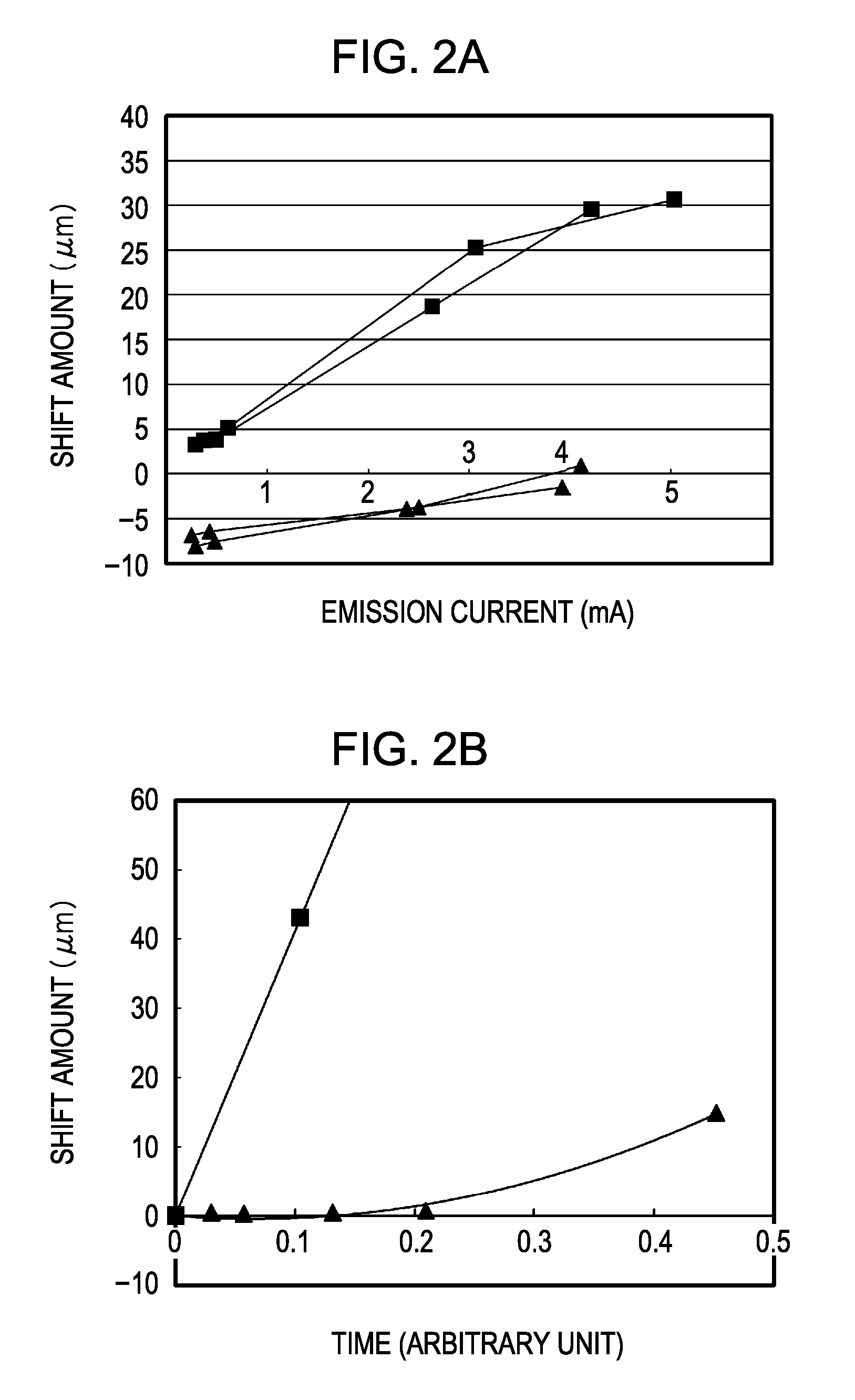Flat-panel display
a technology of flat panel display and display screen, which is applied in the direction of discharge tube/lamp details, discharge tube luminescnet screen, incadescent body mounting/support, etc., can solve the problem of bending electron beam orbit, reducing the effect of preventing spark discharge, and unable to effectively suppress, so as to reduce the positive charge, effectively suppress the occurrence of a phenomenon, and suppress the effect of positive charg
- Summary
- Abstract
- Description
- Claims
- Application Information
AI Technical Summary
Benefits of technology
Problems solved by technology
Method used
Image
Examples
second embodiment
[0164] The second embodiment is a modification of the first embodiment. FIG. 3 is an enlarged schematic partial end view (exploded view) showing the vicinity of a spacer. In the second embodiment, a high-resistance layer 51 is formed on a portion of the anode panel AP which contacts each spacer 40. Specifically, the high-resistance layer 51 is formed on a portion of the anode panel AP which contacts each spacer 40 and more specifically formed on a portion of the anode electrode 24 which is disposed on the bottoms, sides, and tops of the spacer holding parts 25. The high-resistance layer 51 is composed of a SiC film of 0.2 μm in thickness and is formed by RF sputtering. The contact resistance between the high-resistance layer 51 and each spacer 40 is about 0.33×109 Ω, and the sheet resistivity of the high-resistance layer 51 is about 0.33×104 Ω·m2. The voltage applied in measurement is 1 kV.
[0165] The constitution, structure, and assembling method of the display according to the sec...
third embodiment
[0166] The third embodiment is also a modification of the first embodiment. FIG. 4 is an enlarged schematic partial end view (exploded view) showing the vicinity of a spacer. In the third embodiment, a high-resistance layer 51 is formed on a portion of a substrate constituting an anode panel.
[0167] More specifically, in the flat-panel display according to the third embodiment, the anode electrode 24 includes a plurality of anode electrode units 24A. The high-resistance layer 51 extends to the anode electrode units 24A and is electrically connected to the anode electrode units 24A.
[0168]FIG. 5 is a schematic view showing the arrangement of the anode electrode units 24A, the high-resistance layers 51, the partition walls 21, the spacer holding parts 25, the spacers 40, and the fluorescent layers 22 (22R, 22G, and 22B) on the anode panel AP constituting the flat-panel display of the third embodiment. FIG. 5 shows the partially cut-away spacers 40 for the convenience sake. As shown in...
fourth embodiment
[0173] The fourth embodiment is also a modification of the first embodiment. FIG. 7 is an enlarged schematic partial end view (exploded view) showing the vicinity of a spacer. In the fourth embodiment, a high-resistance layer includes a high-resistance member 61 held between the top surface of each spacer 40 and the anode electrode 24. More specifically, the high-resistance thin-plate member 61 is composed of high-resistance frit glass of several tens μm in thickness. In this case, the contact resistance of the high-resistance member 61 is about 0.33×109 Ω, and the sheet resistivity of the high-resistance member 61 is about 0.33×104 Ω·m2. The contact resistance or sheet resistivity of the high-resistance member 61 means the contact resistance or sheet resistivity between the anode electrode 24 and each spacer 40 with the high-resistance member 61 provided therebetween. The voltage applied in measurement is 1 kV.
[0174] The constitution, structure, and assembling method of the displa...
PUM
 Login to View More
Login to View More Abstract
Description
Claims
Application Information
 Login to View More
Login to View More - R&D
- Intellectual Property
- Life Sciences
- Materials
- Tech Scout
- Unparalleled Data Quality
- Higher Quality Content
- 60% Fewer Hallucinations
Browse by: Latest US Patents, China's latest patents, Technical Efficacy Thesaurus, Application Domain, Technology Topic, Popular Technical Reports.
© 2025 PatSnap. All rights reserved.Legal|Privacy policy|Modern Slavery Act Transparency Statement|Sitemap|About US| Contact US: help@patsnap.com



